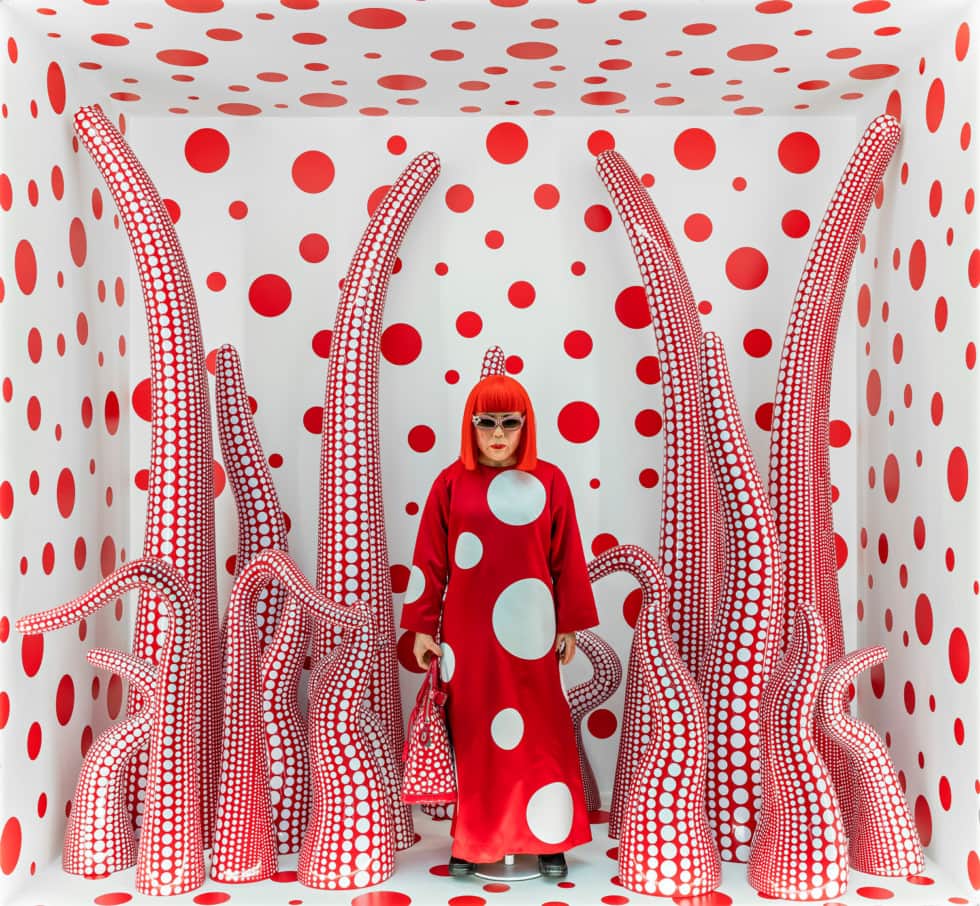Kusama and the Polka dot
“Bring on Picasso, bring on Matisse, bring on anybody! I would stand up to them all with a single polka dot!”
Yoyoi Kusama
What changes the history of art? For Yayoi Kusama, it was a single object: The polka dot.
During the beginning of her career in New York, the artist decided to best way to capture the imaginative scene of 1957 was to apply the motif to paper, walls, canvas and even her own naked body.
And thus, Kusama became just as persuasive with her polka dots as that of her male predecessors.
For her works beginning in the 1950s, we have brilliant displays of monochromatic canvases filled with tiny dots, like the “Infinity Net”. Sculptures beaming with the troves of flowers and soft objects that can only be referred to as phallic.
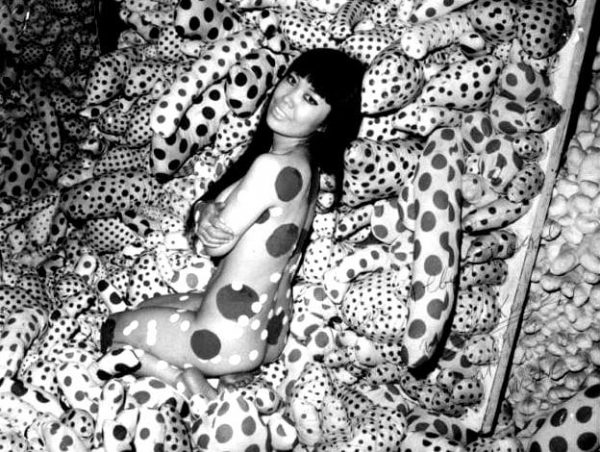
She helped pioneer performance, installation, and Pop art, to all the while paving the way for the Minimalism movement that would soon shape modern art of the day.
The Kusama experience brought nude dot-covered people to crowded corners of New York, including Times Square.
While her installations have stood the test of time and cultural reference, they still boast as heavy tourist attractions – and always provide the noteworthy with an instagrammable moment.
From Japan to United States
Always a keen expression of her life and most notably her own obsessive-compulsive neuroses Kusama has said that; “My desire was to predict and measure the infinity of the unbounded universe, from my own position in it, with dots”.
During 1977, she relied on a Tokyo sanatorium for treatment of her compulsions, where she continues to live and make art.
Upon leaving her native Japan for the United States in 1956 Kusama had already begun her practice of dot-making.
The repetitive covering of paper with diminutive marks fed her love of art. Also helped her cope with the stress-induced hallucinations she’d experienced from a young age.
“By translating hallucinations and fear of hallucinations into paintings, I have been trying to cure my disease”, she explained in a 1999 interview. “I wanted to be completely detached from that and start a new art movement,” Kusama has said.
New York solo exhibition and Affirmation
By 1959, she and her tiny dots became subject of her premiere solo New York exhibition.
She created an immediate sensation, solidifying herself with a rave review from a then leader of the Minimalist art wave.
It was her craftsmanship that created the bridge between Abstract Expressionism and Minimalism, writer Grady T. Turner has pointed out, poignantly that it was “avant-garde aesthetics” and the “hallucinatory images” that consumed Kusama’s own mind.
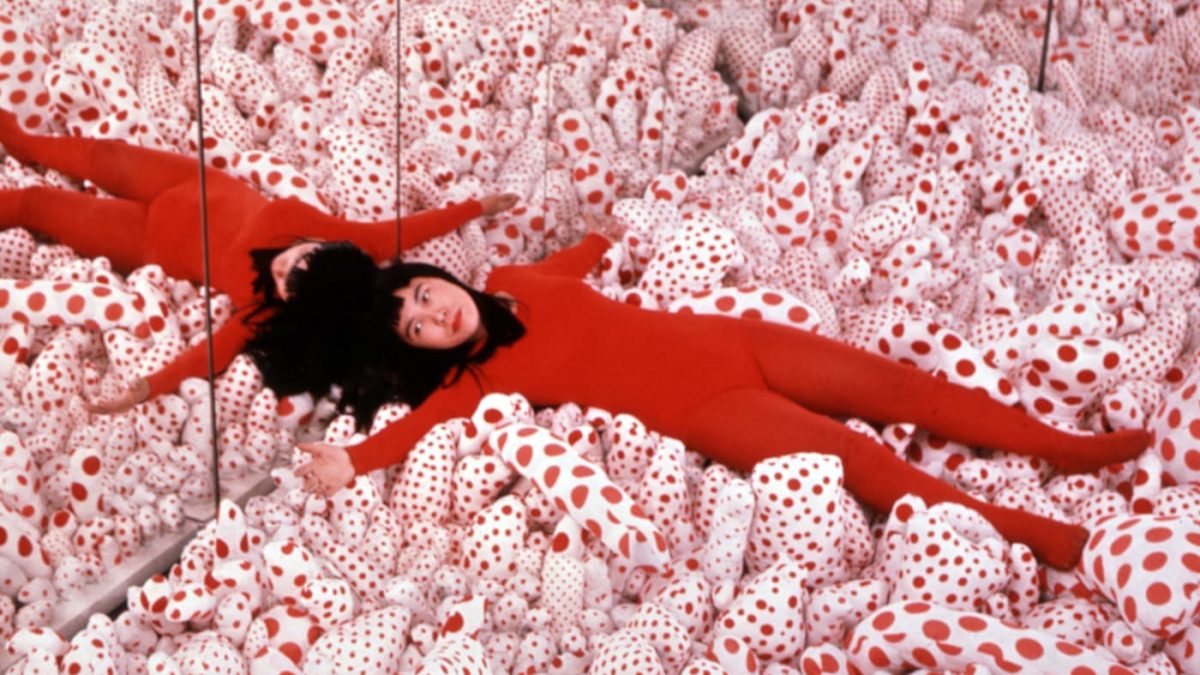
In a 1961 article titled “Under the Spell of Accumulation,” Kusama has described her apparitions: “I gradually feel myself under the spell of the accumulation and repetition in my ‘nets’ which expand beyond myself, and all over the limited space of canvas covering the floor, desk and everywhere,”.
Over the span of her life, Kusama has continued to make “Infinity Nets.”
They have varying degrees in size and color they all remain the boast of what she refers to as her “obsessional” practice.
Kusama and Infinity Mirror rooms
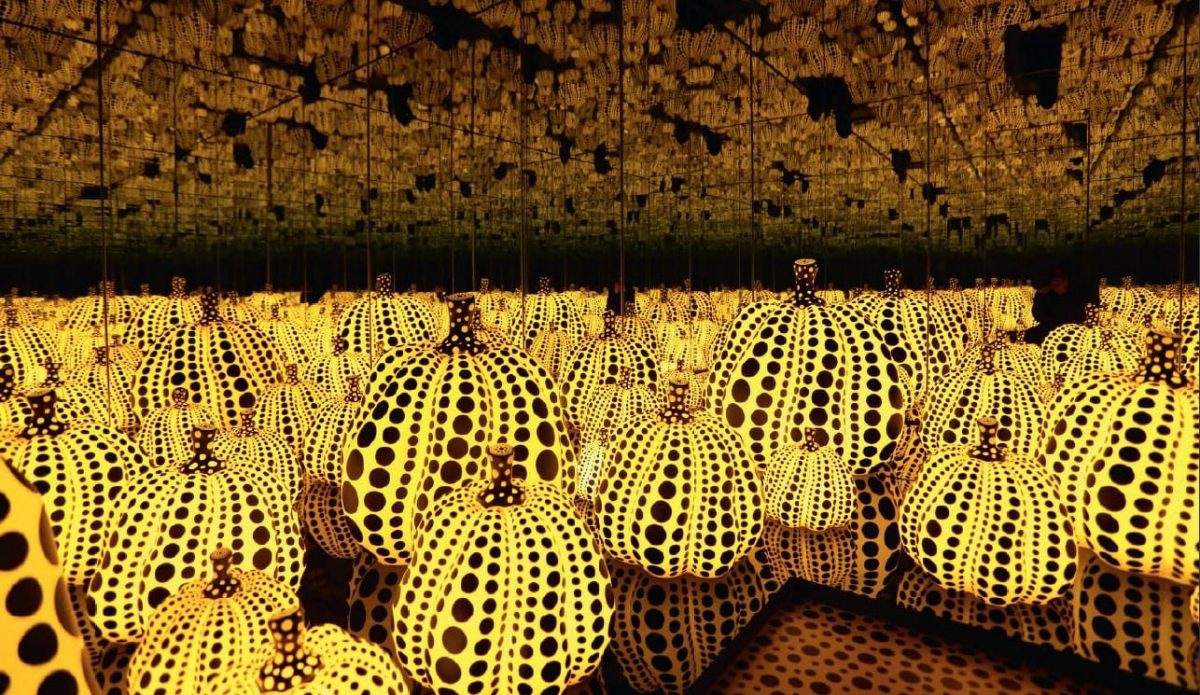
In the last 54 years, Kusama has produced over 20 “Infinity Mirror” rooms. More recently they’ve become the major draw of Kusama retrospectives, converting observers to a kaleidoscopic black hole of shimmering dots, all the while providing the perfect landscape for a likable selfie.
Apart from her most noteworthy polka dots, she is almost as famous for her take on pumpkins.
Placing them in drawings, paintings, installations, and sculptures throughout her career.
Making their debut in 1946 the Kusama pumpkin made its premiere 10 full years before her entry into the New York art scene and her meteoric rise to fame.
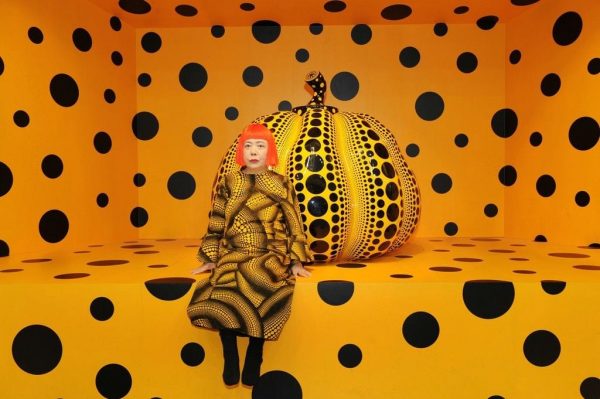
Not until the 1970s, did pumpkins reappeared in her work, notably as a means of fusing abstraction and representation.
Curator Catherine Taft reveals “They filled her canvases with an almost “anthropomorphic presence,”. Kusama has portrayed the motif humanistically in a 2015 interview “I love pumpkins because of their humorous form, warm feeling, and a human-like quality,”. And thus has been synonymous with her practice.
So much so that during the run of her installation at the 1993 Venice Biennale, she handed out little sculptural pumpkins to visitors.
Expanding on her works she’s reproducing the vegetable in another adaptation of her most famous – polka dots.
The largest of these installations sits in her native Japan, gracefully in Naoshima, an island completely covered in art.
Kusama today at 89 continues to spread her art and her ever-growing polka dots around the world; through the sculptures and painting, they cover.
